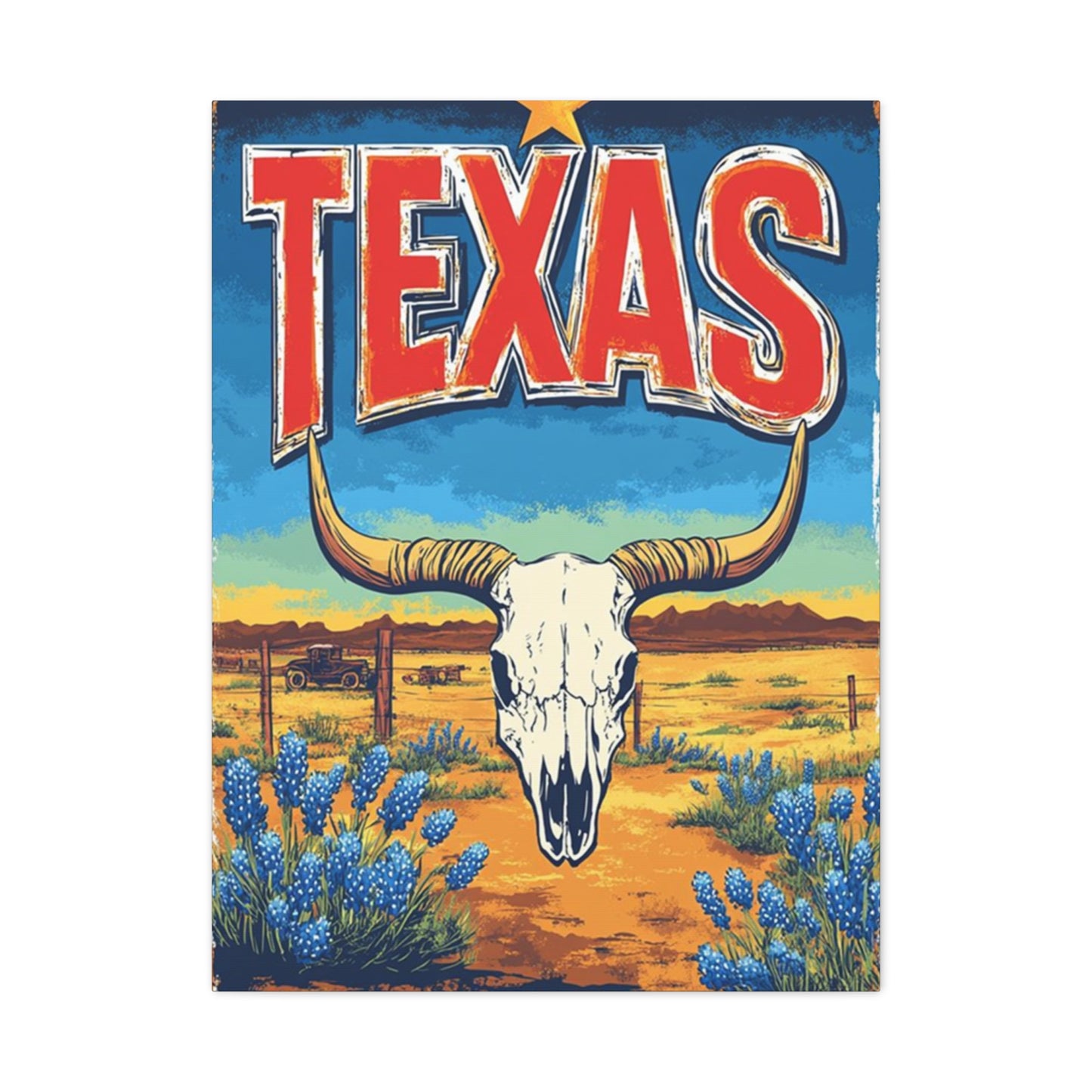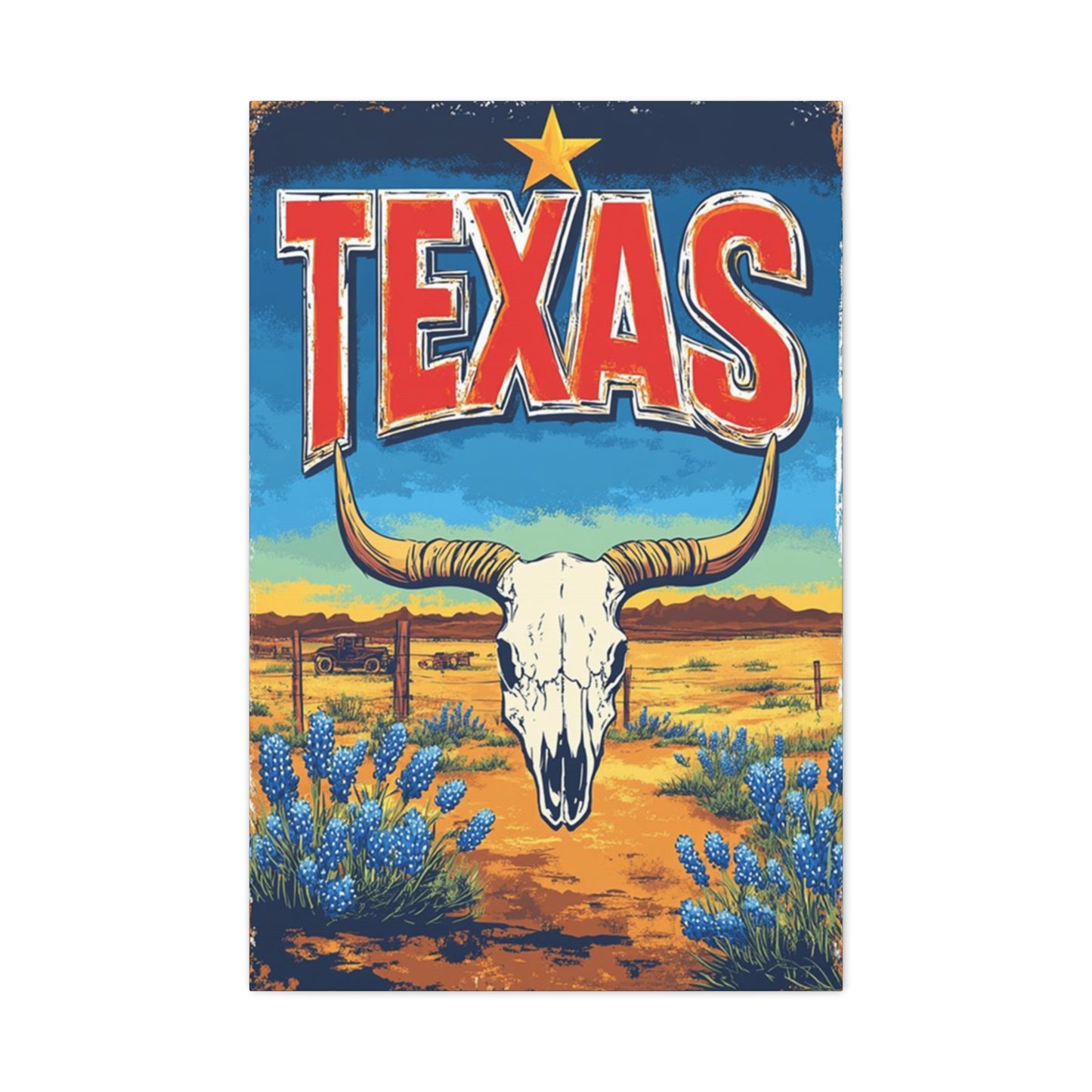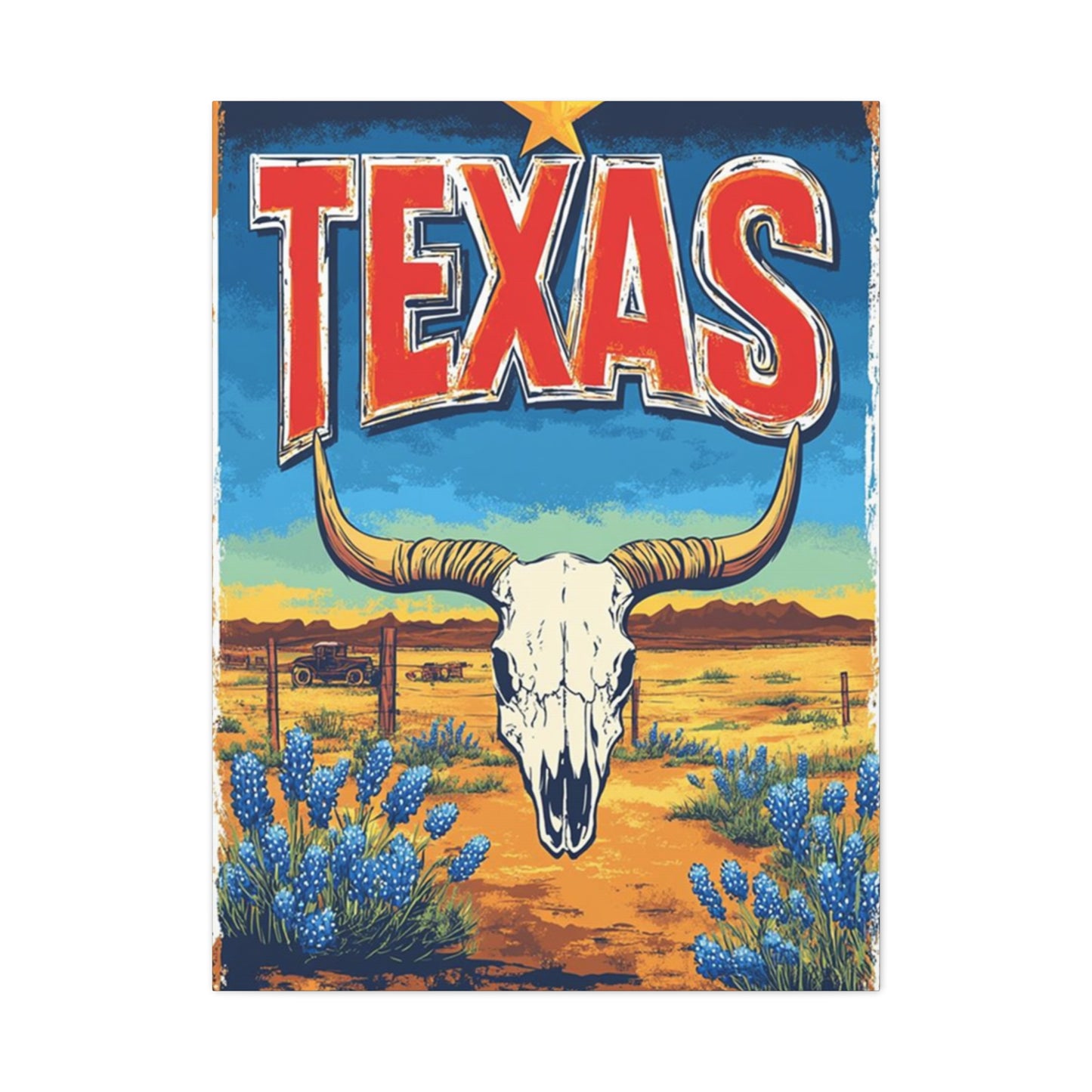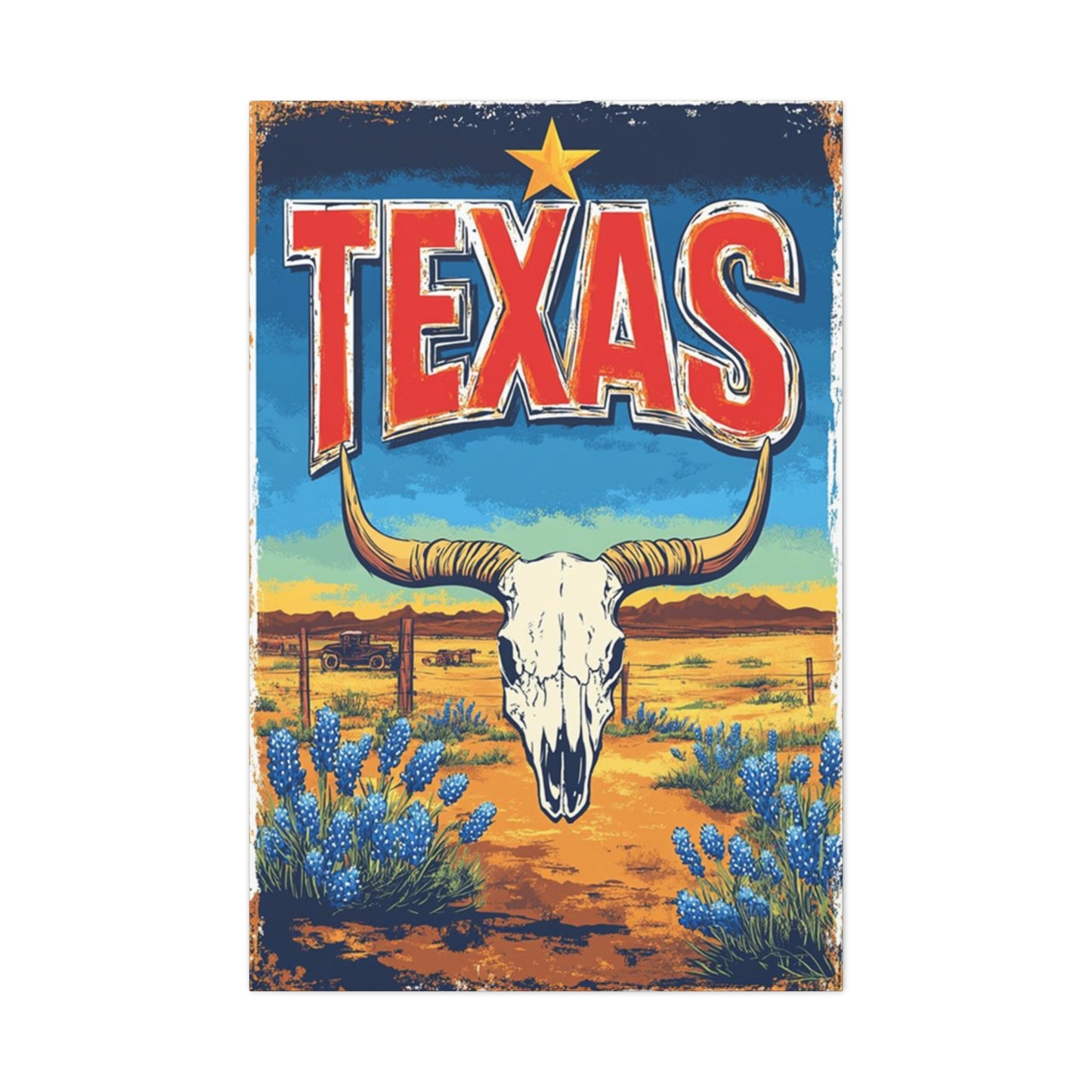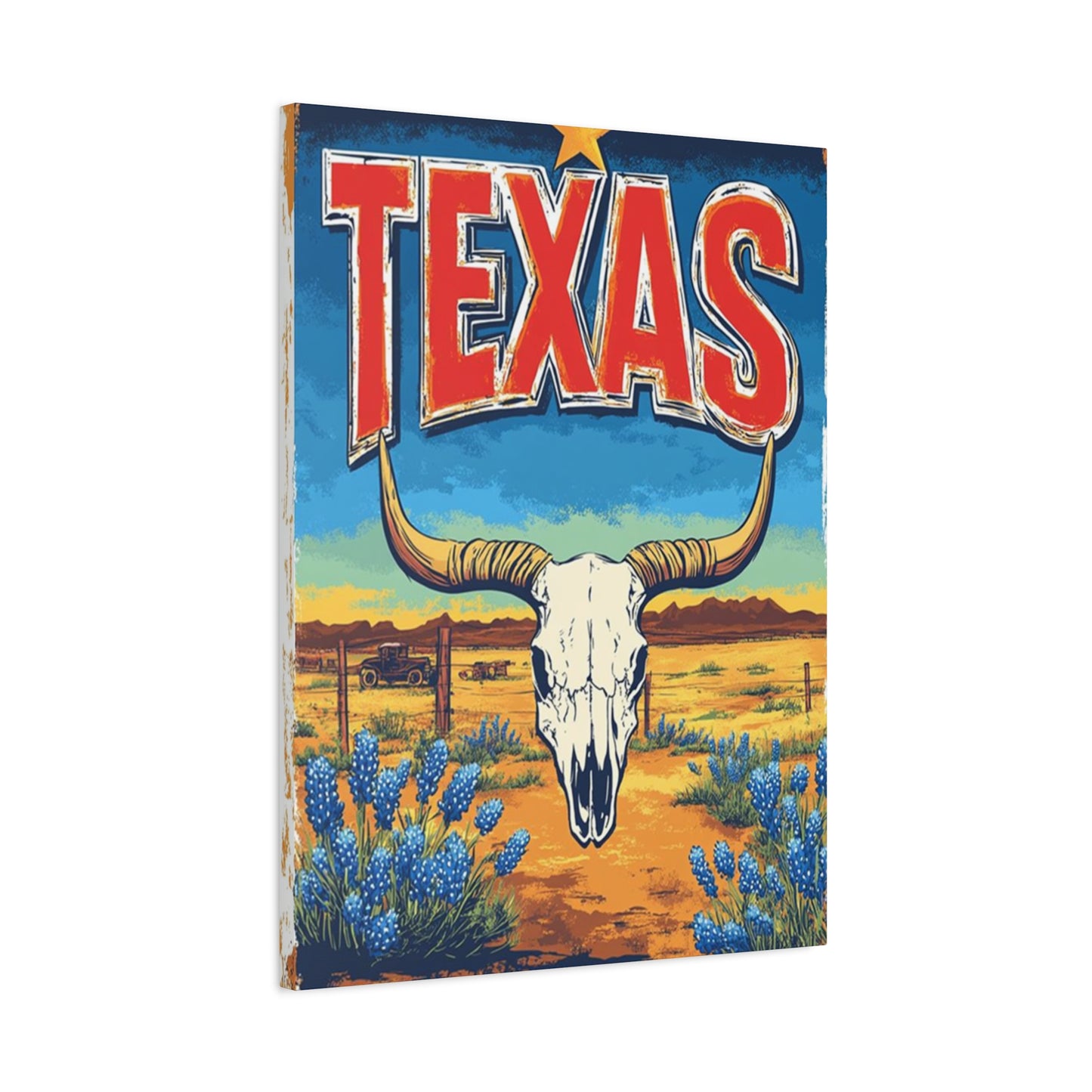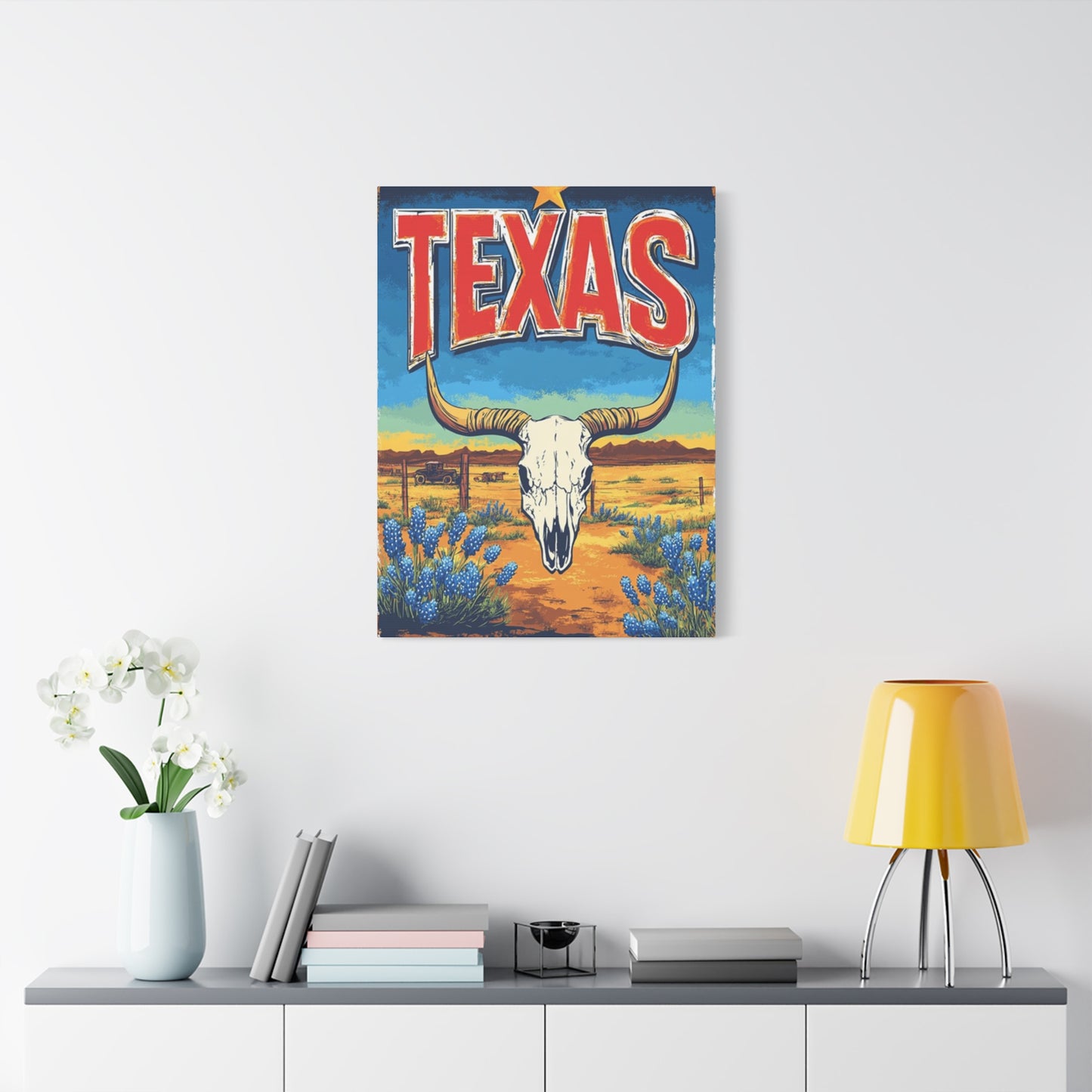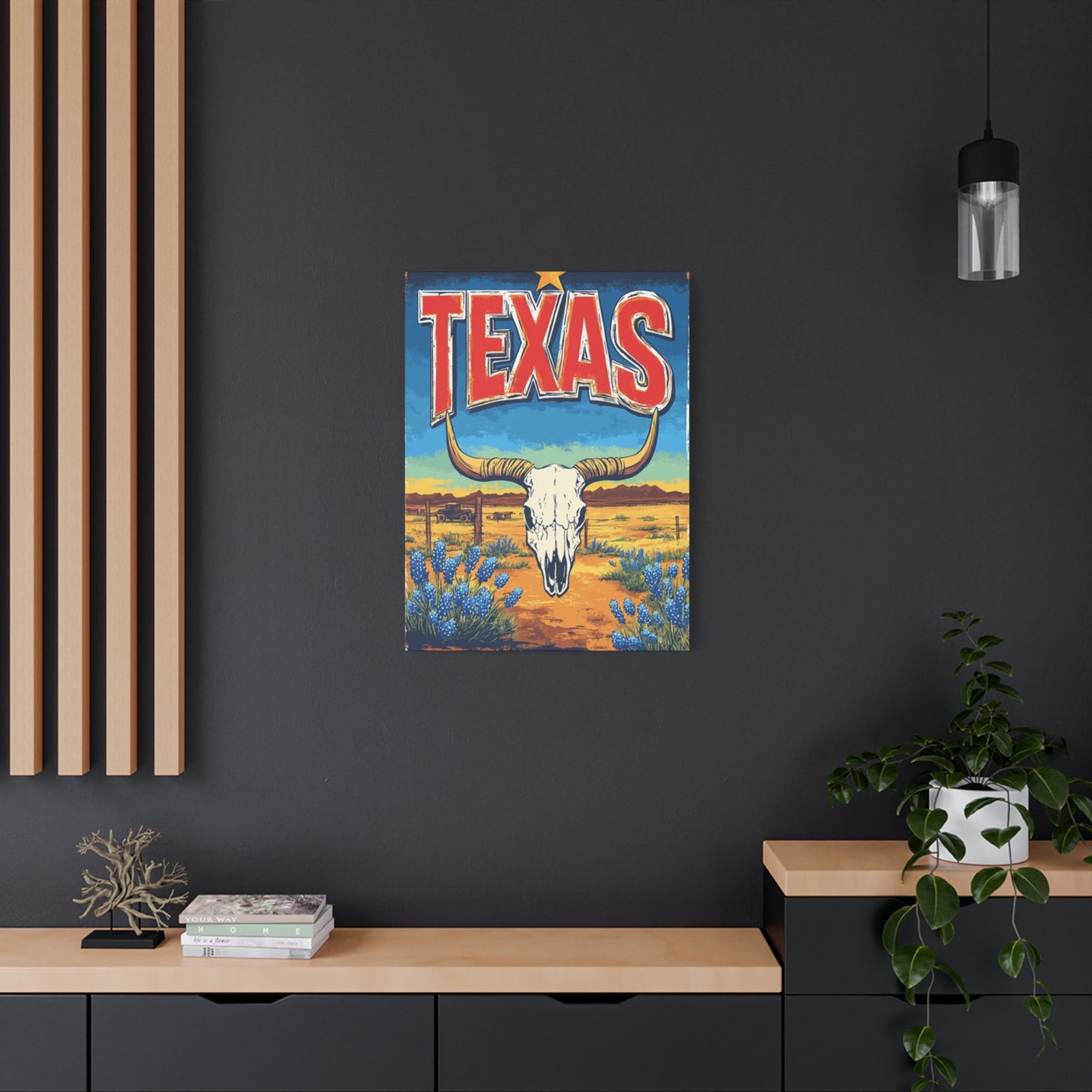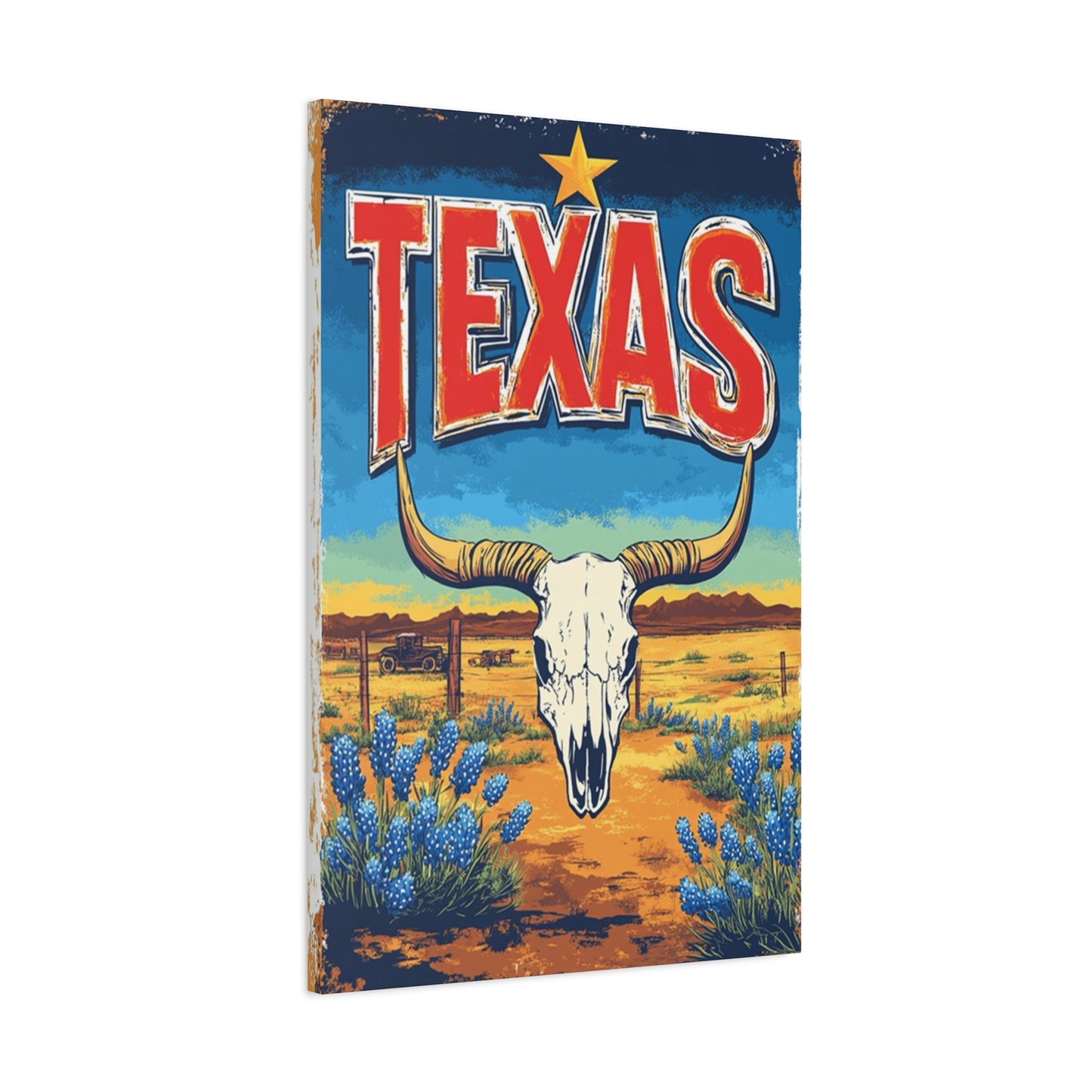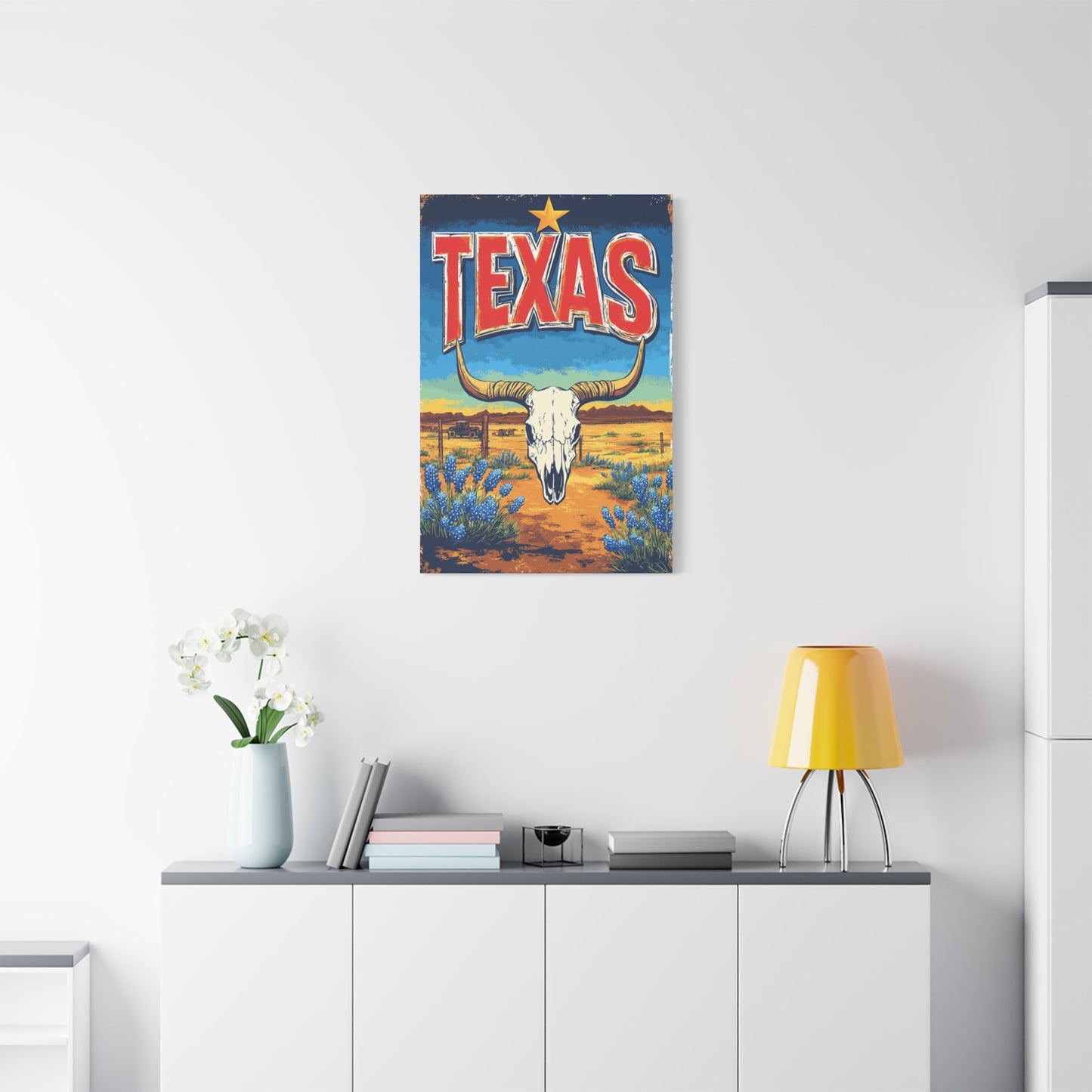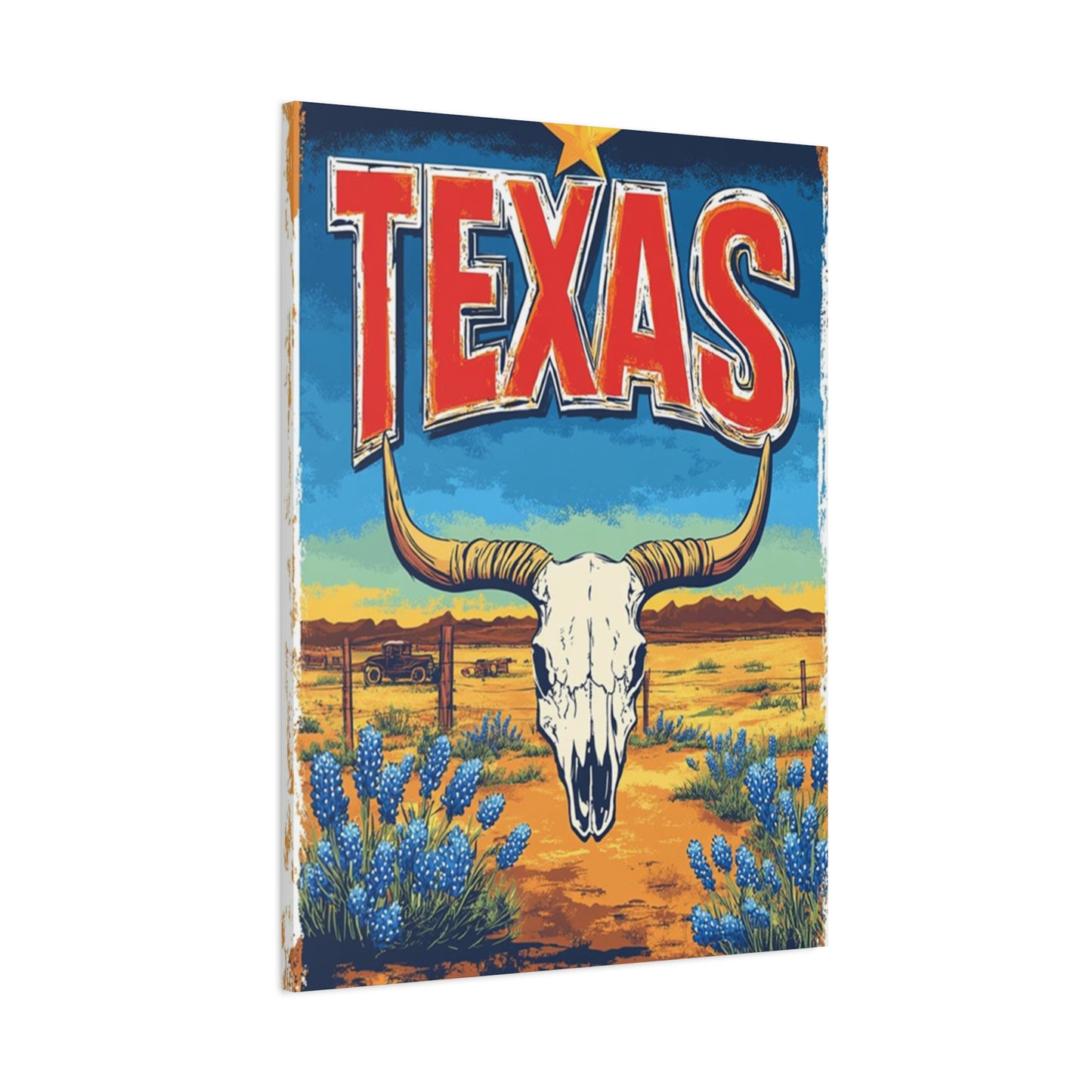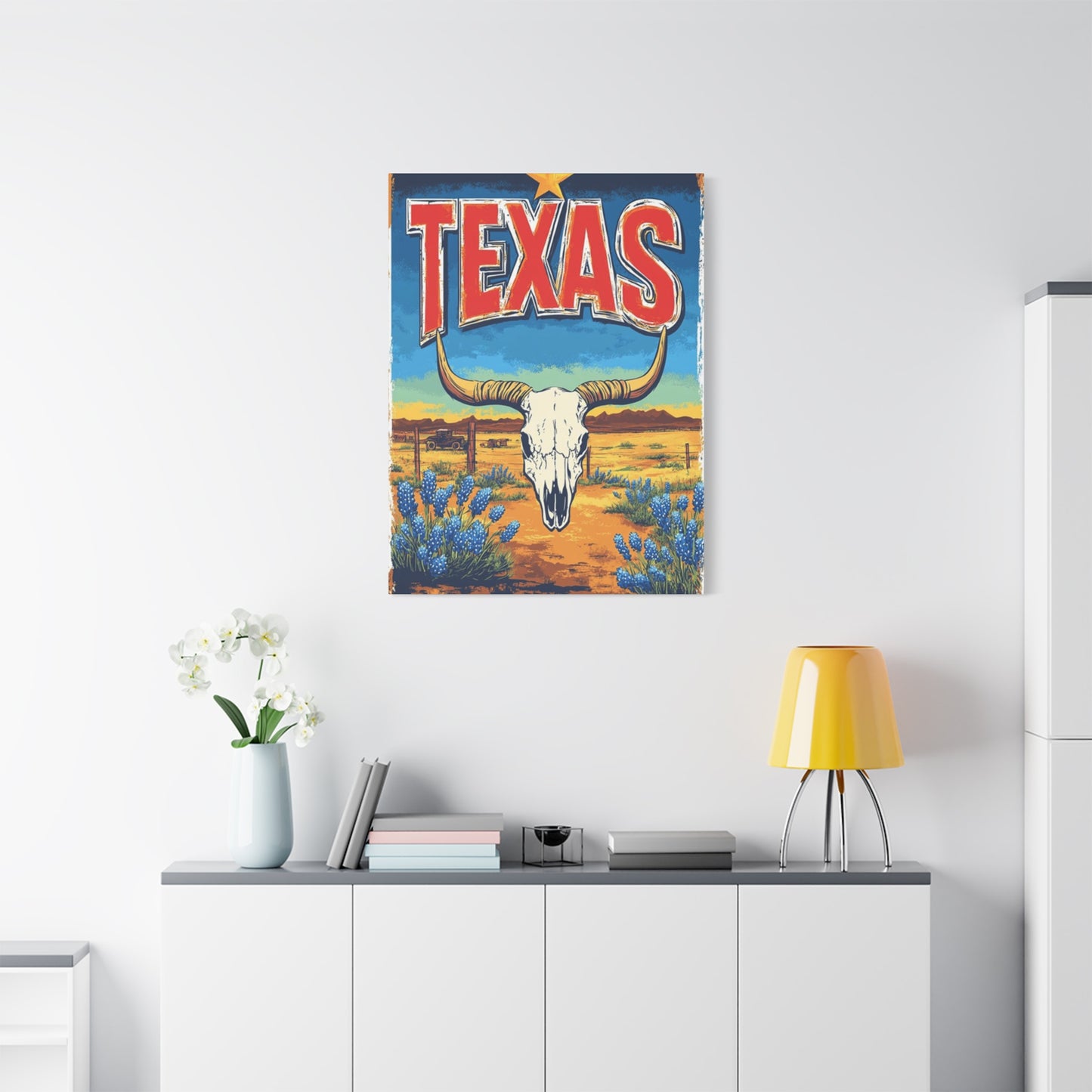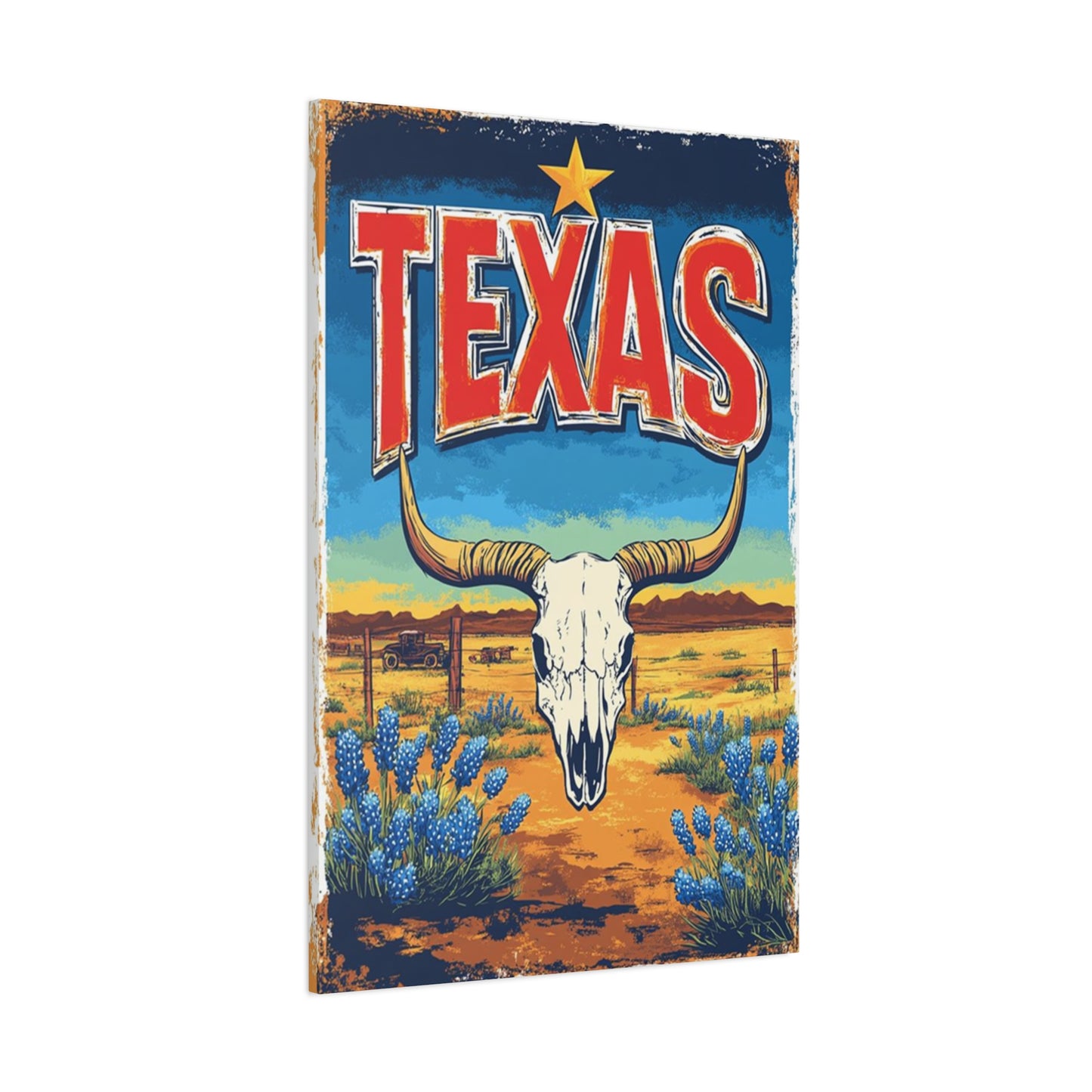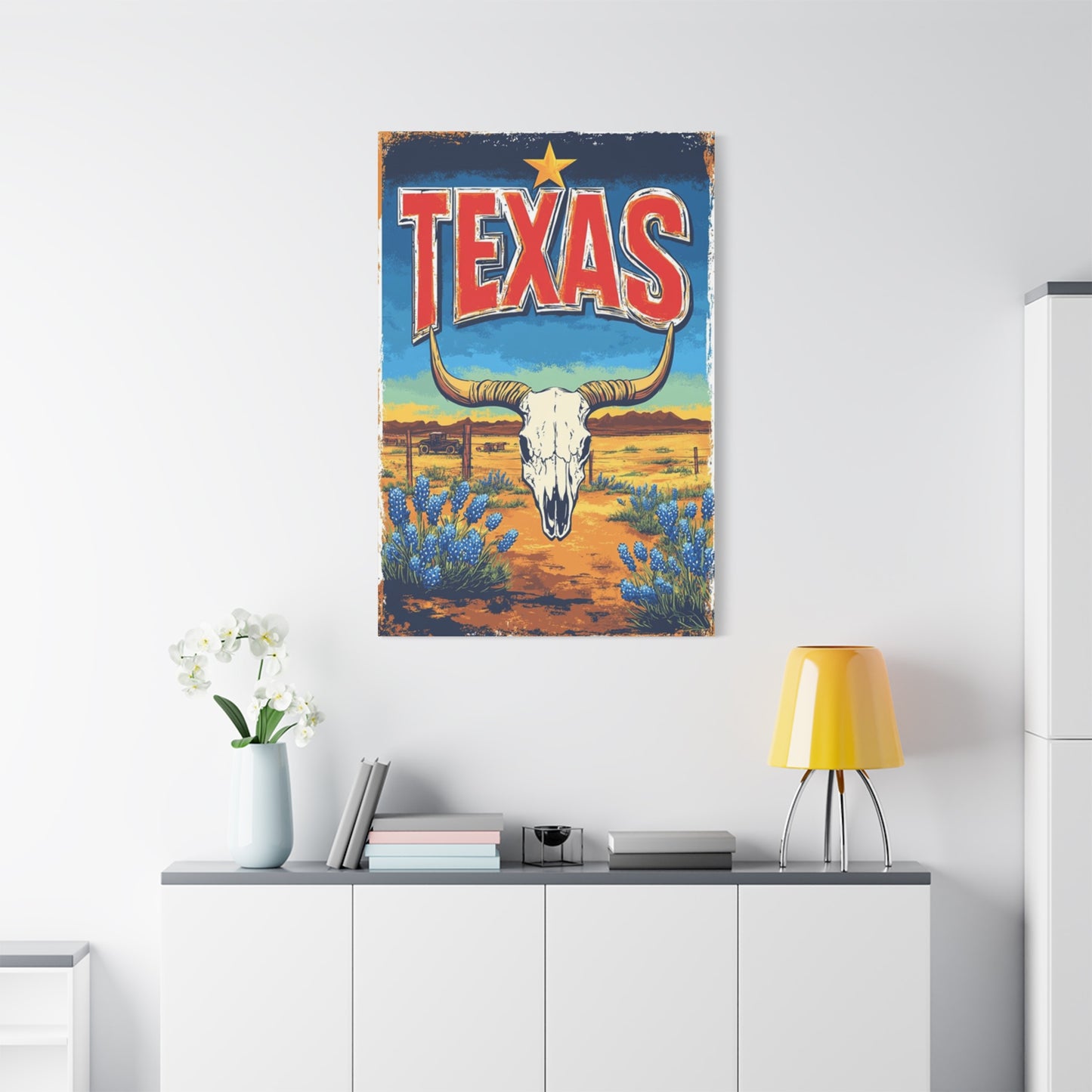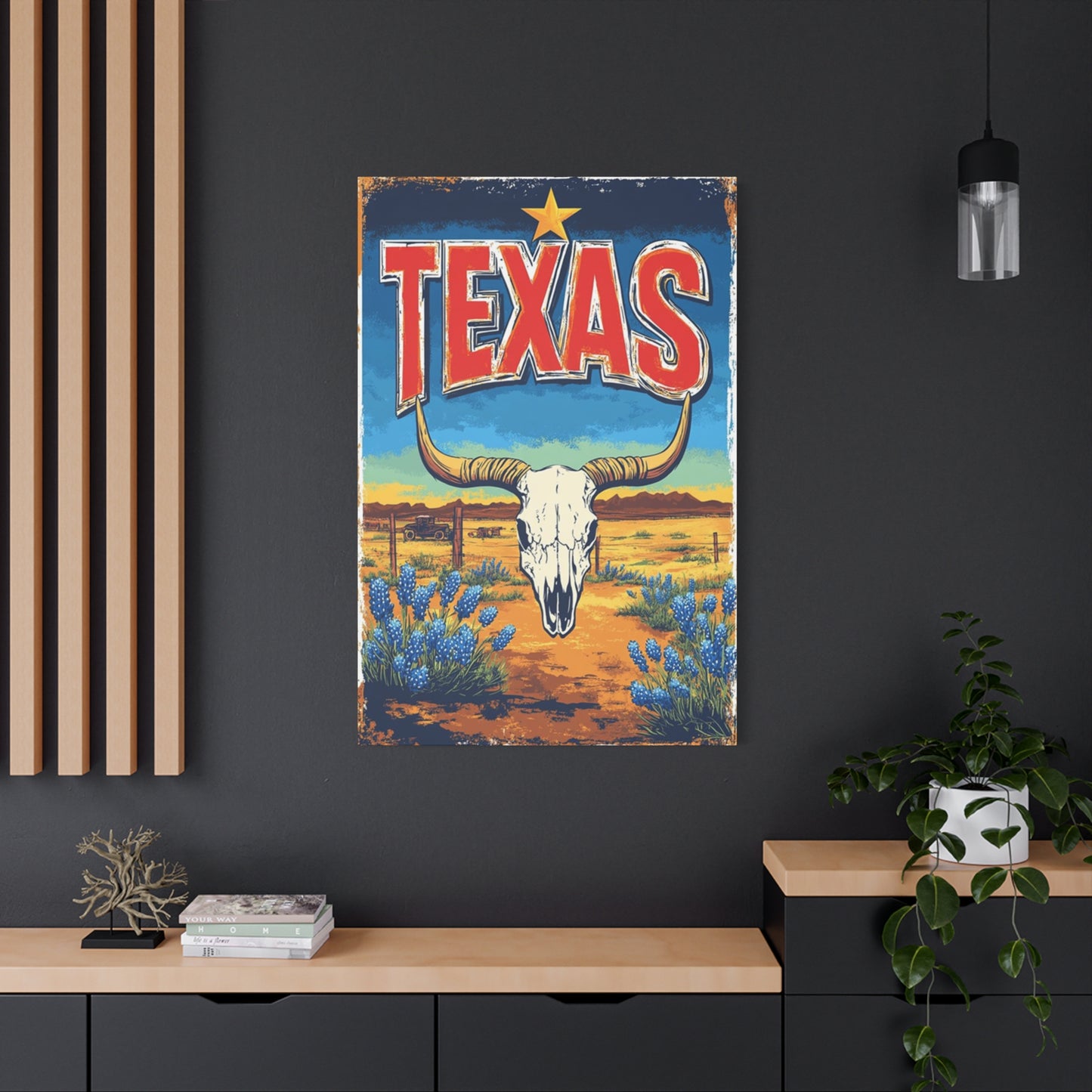DIY Guide: Creating Your Own Bull Skull Texas Wall Art with Natural Materials
The American Southwest has captivated artists, designers, and homeowners for generations with its distinctive visual language. Among the most recognizable symbols of this region, the combination of sweeping desert landscapes and weathered bull skulls has emerged as a powerful artistic motif. This imagery transcends simple decoration, embodying the raw beauty, resilience, and untamed spirit of Texas and the broader Western frontier. When translated into poster art and wall decor, these elements create compelling visual statements that resonate with diverse audiences seeking to infuse their spaces with character, history, and natural elegance.
The pairing of stark desert vistas with bleached animal skulls represents more than aesthetic appeal. It speaks to fundamental themes of survival, permanence, and the cycle of life in harsh environments. The Texas landscape, with its endless horizons, dramatic rock formations, and resilient vegetation, provides a backdrop that emphasizes both beauty and severity. The bull skull, stripped clean by time and elements, serves as a reminder of mortality while simultaneously celebrating the strength and presence of creatures that once roamed these lands freely.
In contemporary interior design, this Western aesthetic has experienced remarkable growth in popularity. Homeowners, businesses, and design enthusiasts increasingly seek authentic representations of regional character that go beyond generic decoration. Wall art featuring these iconic elements satisfies multiple desires: connection to nature, appreciation for Western heritage, and the creation of focal points that spark conversation and contemplation. The versatility of this imagery allows it to complement various design styles, from rustic farmhouse to modern minimalist, making it accessible to a broad spectrum of tastes and preferences.
The Cultural Significance of Bull Skulls in Western Art
Bull skulls hold profound cultural meaning throughout Western and Southwestern regions of North America. These skeletal remains have become synonymous with the frontier experience, representing both the challenges of survival and the indomitable spirit required to thrive in unforgiving landscapes. Native American traditions viewed animal skulls as sacred objects, believing they contained spiritual energy and served as connections between physical and metaphysical realms. This reverence for natural forms influenced how subsequent generations approached these symbols in artistic contexts.
The iconography of cattle skulls gained particular prominence during the expansion of ranching culture across Texas and neighboring states. As the cattle industry shaped economic and social structures throughout the nineteenth and twentieth centuries, the physical remnants of this lifestyle became embedded in regional identity. Artists recognized the visual power of these bleached bones against desert backgrounds, creating works that captured both the hardship and romance of Western life. Georgia O'Keeffe famously elevated skull imagery to fine art status, demonstrating how these natural forms could convey complex emotions and philosophical concepts.
In modern interpretations, bull skulls continue to carry layered meanings. They represent authenticity and connection to historical roots for those with familial ties to ranching communities. For urban dwellers, they offer a tangible link to landscapes and lifestyles far removed from city environments. The skulls also embody aesthetic qualities that appeal to design sensibilities: clean lines, organic forms, and dramatic contrasts between solid masses and empty spaces. This combination of cultural depth and visual appeal explains the enduring presence of skull imagery in contemporary wall art collections.
The transformation of bull skulls from ranch relics to artistic subjects reflects broader changes in how society values rural heritage. As fewer people engage directly with agricultural lifestyles, the symbols of that world gain nostalgic and romantic associations. Poster art featuring these elements allows individuals to claim connections to Western traditions without direct experience of ranching life. This democratization of Western symbolism has generated both appreciation and debate about authenticity, cultural appropriation, and the commercialization of regional identity. Nevertheless, the imagery persists because it taps into fundamental human responses to nature, mortality, and the passage of time.
Texas Landscape Characteristics That Define Regional Art
The geography of Texas encompasses extraordinary diversity, from coastal plains to mountain ranges, but the desert and semi-arid regions dominate popular imagination and artistic representation. These landscapes feature distinctive characteristics that translate powerfully into visual art: vast open spaces that extend to distant horizons, dramatic lighting conditions that shift throughout the day, vegetation adapted to extreme conditions, and geological formations shaped by millennia of natural forces. Artists capturing these environments must convey both specific details and overwhelming scope, a balance that separates memorable work from generic representations.
Desert vegetation provides essential visual interest in landscape compositions. Prickly pear cacti, with their flat paddle-shaped segments and vibrant fruits, create recognizable silhouettes against sky and earth. Mesquite trees, twisted and weathered by wind and drought, add organic complexity to otherwise spare scenes. Yucca plants thrust dramatic flower spikes upward during blooming seasons, punctuating horizontal landscapes with vertical accents. Sagebrush spreads across rolling terrain in silvery-green masses that shift color with changing light. These plants survive through remarkable adaptations, making them symbols of resilience that reinforce the thematic content of Western art.
Geological features shape the character of Texas landscapes in ways that artists emphasize to create compelling compositions. The Chisos Mountains in Big Bend National Park offer dramatic elevation changes and distinctive rock formations that photograph and illustrate beautifully. The Palo Duro Canyon, often called the Grand Canyon of Texas, presents layers of colorful sedimentary rock that record millions of years of natural history. Balanced rocks, wind-carved formations, and eroded badlands provide sculptural elements that add three-dimensional interest to two-dimensional representations. These natural features anchor compositions and provide reference points that help viewers orient themselves within depicted spaces.
Design Elements That Make Effective Wall Art
Creating successful poster art requires understanding fundamental design principles that guide viewer attention and create satisfying visual experiences. Composition forms the foundation of effective wall art, determining how elements arrange within the frame and how the eye moves through the image. Strong compositions typically establish clear focal points, create visual pathways that lead viewers through the scene, and balance different elements to prevent any single area from overwhelming the whole. In Texas landscape and bull skull artwork, these principles apply whether the style tends toward photorealism, stylized illustration, or abstract interpretation.
Contrast serves multiple functions in poster design, creating visual interest, emphasizing important elements, and establishing mood. Tonal contrast between dark and light areas creates drama and depth, making two-dimensional images appear more three-dimensional. Color contrast can highlight specific features or create emotional responses through juxtaposition of complementary or clashing hues. Textural contrast adds tactile qualities even to smooth paper surfaces, suggesting rough stone, weathered bone, or dusty earth. Effective Western artwork typically employs high contrast to echo the harsh lighting conditions of desert environments and to create bold visual statements that command attention on walls.
Scale relationships within compositions determine how viewers perceive space and importance. Placing a bull skull prominently in the foreground while extending landscape elements toward distant horizons creates depth perception and emphasizes the skull as primary subject. Conversely, showing a small skull within a vast landscape emphasizes the overwhelming scope of natural environments and the relative insignificance of individual creatures. Artists manipulate scale deliberately to communicate specific messages about relationships between subjects and settings. Successful poster art makes these scale decisions clearly, avoiding ambiguity that might confuse or disorient viewers.
Color harmony establishes emotional tone and visual cohesion in artwork. Analogous color schemes, using colors adjacent on the color wheel, create gentle, harmonious effects appropriate for calming, contemplative pieces. Complementary schemes, pairing opposite colors like blue and orange, generate energy and tension suitable for dynamic, attention-grabbing work. Monochromatic approaches, using variations of single hues, emphasize form and composition over color itself. Texas landscape art typically draws from earth tone palettes punctuated by sky blues, creating natural harmony while allowing strategic color accents to provide visual interest. Understanding color psychology helps artists evoke desired emotional responses from viewers.
Evolution of Western Wall Art
Western art emerged as a distinct genre during the nineteenth century as Euro-American settlers moved across the continent and encountered landscapes, peoples, and wildlife unlike anything in their previous experience. Early Western artists served documentary functions, recording scenes and subjects for audiences who would never visit these remote regions. Artists like George Catlin focused on Native American subjects, creating ethnographic records that also functioned as romantic portrayals of vanishing cultures. Others documented natural wonders, contributing to growing awareness of Western landscapes that would eventually lead to conservation efforts and national park designations.
The cowboy emerged as central Western iconography during the late nineteenth and early twentieth centuries, with artists like Frederic Remington and Charles Russell creating definitive visual representations of ranch life. These artists combined technical skill with firsthand knowledge of their subjects, producing work that balanced accuracy with drama. Their paintings, sculptures, and illustrations established visual vocabulary still referenced in contemporary Western art: wide-brimmed hats, leather chaps, longhorn cattle, and windswept prairies. While human figures dominated much of this early work, the landscapes and animal life of the West gained recognition as compelling subjects worthy of dedicated artistic attention.
The twentieth century brought significant evolution to Western art through movements like Regionalism and the introduction of modernist aesthetics. Artists began questioning romantic portrayals of the West, creating more complex and sometimes critical perspectives on frontier history and contemporary Western life. Georgia O'Keeffe's New Mexico paintings transformed how artists approached desert landscapes and natural forms, demonstrating that Western subjects could sustain sophisticated formal experimentation. Her skeletal imagery, in particular, showed how regional elements could convey universal themes about life, death, and the relationship between organic forms and abstract design principles.
Photography revolutionized Western art by providing new ways to capture and disseminate landscape imagery. Ansel Adams and other photographers demonstrated that camera work could achieve artistic status equal to traditional media, creating iconic images of Western landscapes that influenced painting, illustration, and commercial design. Photography also made Western imagery more accessible, allowing mass production of prints and posters that brought this aesthetic into homes and businesses far from the actual landscapes depicted. This democratization of Western art contributed to its mainstream popularity and commercial viability.
Contemporary Western art encompasses enormous stylistic diversity, from traditionalists maintaining nineteenth-century approaches to conceptual artists deconstructing Western myths and stereotypes. Digital tools have expanded possibilities for creating and manipulating imagery, allowing artists to blend photography, illustration, and graphic design in ways impossible with traditional media. The market for Western wall art has grown substantially as interior design trends have embraced rustic, farmhouse, and eclectic styles that incorporate regional American aesthetics. This commercial success has attracted artists from diverse backgrounds, enriching the genre while raising questions about authenticity and cultural representation.
Material and Production Considerations for Poster Art
The physical characteristics of poster art significantly impact its visual appearance, longevity, and suitability for different display contexts. Paper quality forms the foundation of poster production, with options ranging from basic bond paper to premium archival stocks. Heavier paper weights generally provide better durability and resist warping when mounted or framed. Matte finishes reduce glare and reflections, making artwork visible from various angles under different lighting conditions. Glossy finishes intensify colors and contrast but can create viewing difficulties in bright environments. Textured papers add tactile interest and can enhance certain artistic styles, particularly those mimicking traditional painting techniques.
Printing technology determines how faithfully reproduction matches original artwork and how colors appear across different viewing conditions. Digital printing methods dominate contemporary poster production, offering advantages in color accuracy, detail resolution, and production flexibility. Inkjet printing using archival pigment inks provides excellent color reproduction and longevity for limited edition fine art prints. Offset lithography remains cost-effective for large production runs while maintaining good quality. Giclée printing represents the premium end of digital reproduction, delivering museum-quality results suitable for collectors and serious art enthusiasts. Understanding these production options helps consumers select appropriate products for their specific needs and budgets.
Color management throughout the production process ensures that printed posters accurately reflect artistic intent. Monitors, printers, and papers all interpret color information differently, requiring calibration and profiling to maintain consistency. Professional printers use color-managed workflows that account for these variables, producing predictable results across different substrates and production methods. Artists and publishers must consider how their chosen color palettes will reproduce in print, sometimes adjusting digital files to compensate for limitations in printing processes. This technical attention separates professional-quality reproductions from inferior products that disappoint buyers with inaccurate colors or poor detail rendering.
Interior Design Applications and Style Compatibility
Western wall art featuring Texas landscapes and bull skull imagery adapts to numerous interior design styles beyond obvious rustic or ranch-themed spaces. Modern farmhouse aesthetics, which combine clean contemporary lines with organic textures and natural materials, provide ideal contexts for these artistic elements. The contrast between sleek furniture and rugged Western imagery creates visual interest and prevents spaces from appearing too polished or sterile. Bull skull art introduces organic forms that soften geometric modern furniture while maintaining the neutral color palettes favored in contemporary design. This style flexibility explains much of the recent popularity surge for Western-themed wall art.
Industrial interiors, characterized by exposed brick, metal fixtures, and concrete surfaces, benefit from Western artwork that reinforces raw, unfinished aesthetics. The weathered, elemental quality of desert landscapes and bleached skulls complements industrial materials and color schemes dominated by grays, blacks, and earth tones. These spaces often feature large open wall areas that require substantial artwork to achieve proper scale, making poster-sized Western prints particularly appropriate. The combination of industrial and Western elements creates cohesive environments that feel authentically textured rather than artificially styled.
Minimalist spaces can incorporate Western imagery when artwork itself follows reductive principles. Simple compositions featuring isolated bull skulls against plain backgrounds or vast empty landscapes align with minimalist values of restraint and intentionality. Limited color palettes and emphasis on negative space allow these works to coexist with sparse furnishings and uncluttered surfaces. The key to successfully integrating Western art into minimalist contexts lies in selecting pieces that emphasize form and composition over decorative detail or narrative complexity. This approach demonstrates that regional imagery need not overwhelm spaces when handled with appropriate subtlety.
Eclectic interiors that mix multiple styles, periods, and influences can incorporate Western wall art as one element among diverse collections. The strong visual identity of bull skull and landscape imagery allows these pieces to hold their own alongside artwork from different traditions and aesthetics. Eclectic approaches succeed when underlying color harmonies or thematic connections link disparate elements. Western art contributes natural, organic qualities that balance more refined or artificial elements elsewhere in eclectic collections. This flexibility makes Texas-themed posters accessible to design enthusiasts who resist being confined to single stylistic categories.
Traditional Western and Southwestern interiors remain natural homes for landscape and skull artwork, where these pieces reinforce cohesive regional themes. Heavy wooden furniture, leather upholstery, Native American textiles, and wrought iron fixtures all complement artwork celebrating desert environments and ranch heritage. In these contexts, attention to quality and authenticity becomes particularly important, as knowledgeable viewers will recognize whether artwork genuinely reflects Western character or merely appropriates surface aesthetics. Layering multiple Western elements requires restraint to avoid creating overly themed spaces that feel more like museums or tourist attractions than comfortable living environments.
Symbolic Meanings and Interpretations of Skull Imagery
Skull symbolism carries complex and sometimes contradictory meanings across different cultures and historical periods. Western traditions have often associated skulls with mortality, danger, and the macabre, leading to their use in warning signs, pirate flags, and Halloween decorations. However, many cultures view skulls more positively, seeing them as representations of life force, ancestral presence, or transformation rather than simply death. Mexican Day of the Dead traditions celebrate decorated skulls as joyful reminders of departed loved ones, transforming potential morbidity into colorful festivity. This cultural variation affects how different viewers interpret skull imagery in wall art.
In Western American contexts, bull and cow skulls specifically reference ranching heritage and the practical realities of livestock agriculture. For families with multigenerational ranching histories, skull imagery connects to lived experience and family identity. These objects represent animals that provided livelihoods, shaped daily routines, and defined relationships with land. The reverence some viewers feel toward skull art reflects genuine respect for animals and the sacrifices inherent in food production. This perspective differs substantially from urban viewers who might appreciate the same imagery purely for aesthetic qualities without personal connections to agricultural lifestyles.
Philosophical interpretations of skulls emphasize themes of impermanence, natural cycles, and the relationship between life and death. Buddhist traditions use skull meditation to contemplate mortality and reduce attachment to material existence. Similar contemplative approaches appear in Western philosophical traditions from Stoicism through Existentialism. Artwork featuring skulls can prompt viewers to consider their own mortality and question how they invest time and energy. These deeper reflections transform decorative objects into prompts for meaningful introspection, adding intellectual dimension to aesthetic appreciation.
Ecological perspectives view skulls as evidence of natural processes, reminders of food chains, predator-prey relationships, and nutrient cycles that sustain ecosystems. The bleached bones scattered across desert landscapes demonstrate how death enables new life as decomposing organic matter returns nutrients to soil and feeds other organisms. Artists emphasizing these ecological relationships might position skulls within living landscapes, surrounded by growing plants that literally benefit from organic decomposition. This framing shifts interpretation from morbid fascination toward appreciation for interconnected natural systems.
Contemporary artistic use of skull imagery often emphasizes formal qualities over symbolic content. The clean geometric forms of skulls provide excellent subjects for exploring positive and negative space, light and shadow, and the relationship between organic and abstract forms. Georgia O'Keeffe's skull paintings demonstrate this formal approach, presenting bones as beautiful objects divorced from conventional symbolic associations. Viewers approaching skull art from purely aesthetic perspectives focus on composition, color relationships, and technical execution rather than symbolic meanings. This formalist interpretation coexists with symbolic readings, allowing single artworks to satisfy diverse viewer interests and motivations.
Geographic Specificity and Regional Authenticity
Authentic Texas landscape representation requires understanding geographic and biological details that distinguish this region from generic Southwest desert imagery. Different areas of Texas display distinct characteristics: the Chihuahuan Desert of West Texas differs from the Hill Country, which differs from the coastal plains. Artists creating credible Texas artwork research specific locations, noting characteristic plant species, rock formations, and topographic features. This attention to detail resonates with viewers familiar with actual Texas landscapes while educating those who know the region only through popular culture representations.
Plant species serve as powerful indicators of geographic specificity in landscape art. Texas sage, with its silvery foliage and purple flowers, appears throughout certain regions but not others. Ocotillo plants, sending up tall spiny stalks crowned with red flowers, mark Chihuahuan Desert areas. Prickly pear cacti achieve iconic status throughout much of Texas but appear in various forms depending on specific location and climate. Mesquite, often considered invasive, nonetheless contributes essential character to many Texas landscapes. Artists depicting these plants accurately demonstrate commitment to authenticity that elevates their work above generic desert imagery.
Geological features provide another layer of regional specificity. The limestone formations of the Hill Country, carved by spring-fed rivers and streams, create landscapes quite different from the volcanic formations in Big Bend. Gypsum dunes in some areas contrast with red sandstone formations elsewhere. Alluvial plains support different vegetation than rocky uplands. These variations mean that credible Texas landscape art must specify or at least suggest particular locations rather than presenting generalized desert scenes that could appear anywhere from Arizona to New Mexico. Geographic precision serves both aesthetic and educational functions.
Creating Desert Landscape Art
Photography provides foundation for much contemporary landscape poster art, with artists either offering straight photographic prints or using photographs as references for illustration and painting. Successful landscape photography requires technical skills in exposure management, particularly handling high contrast between bright skies and darker ground features. Graduated neutral density filters help balance these exposure differences, preventing overexposed skies or underexposed foregrounds. Understanding optimal times of day for landscape photography allows artists to capture the dramatic lighting conditions that make desert environments visually compelling. Golden hour photography, shot during the first and last hours of sunlight, produces warm, directional light that emphasizes textures and creates long shadows that add depth to relatively flat terrain.
Digital illustration offers flexibility unavailable with traditional media, allowing artists to combine photographic elements, hand-drawn components, and graphic design features into unified compositions. Vector illustration programs enable creation of clean, scalable artwork that maintains quality at any size, ideal for poster production in multiple dimensions. Raster programs provide painting and photo manipulation capabilities that can transform reference photographs into stylized artwork matching specific aesthetic visions. Digital tools also simplify color adjustment, allowing artists to develop harmonious palettes and create variations of single compositions for different markets or design applications.
Traditional painting techniques remain valuable for artists seeking hands-on engagement with materials or working toward gallery exhibition rather than reproduction. Oil painting allows subtle color blending and rich surface textures difficult to achieve digitally. Acrylic painting provides faster drying times and versatility for building layers quickly. Watercolor creates luminous transparency appropriate for capturing atmospheric effects in vast skies and distant horizons. Each medium imposes particular constraints and enables specific effects, with artists selecting approaches based on desired outcomes and personal working preferences. Even when final products are digital reproductions, some artists continue working in physical media, later scanning or photographing finished works for reproduction.
Market Trends and Consumer Preferences
The home decor market has experienced significant growth in demand for Western and rustic design elements over recent years, driven partly by popular design shows and social media influencers showcasing farmhouse and eclectic interiors. This trend has created expanded opportunities for artists and publishers producing Texas landscape and skull-themed wall art. Consumer interest extends beyond rural or Western regions, with urban and suburban buyers seeking connections to natural environments and American regional heritage. Market analysis indicates particular strength among demographics valuing authenticity, craftsmanship, and distinctive personal style over mass-market conformity.
Size preferences vary depending on intended display locations and overall design schemes. Large statement pieces, roughly thirty by forty inches or bigger, serve as focal points in living rooms, dining areas, or commercial spaces where walls can accommodate substantial artwork. Medium-sized prints, typically sixteen by twenty inches through twenty-four by thirty-six inches, offer flexibility for bedroom walls, office spaces, or gallery wall arrangements. Smaller prints work as accent pieces or in tight spaces where larger artwork would overwhelm. Publishers producing multiple size options maximize market reach while allowing consumers to select scales appropriate for their specific situations and budgets.
Color preferences reflect broader interior design trends toward neutral palettes punctuated with strategic color accents. Artwork emphasizing browns, tans, grays, and muted greens coordinates easily with diverse furniture and decor, making safe choices for consumers uncertain about commitment to bolder colors. However, sunset scenes with warm oranges and reds or stormy skies featuring dramatic purples maintain popularity among buyers seeking more energetic or dramatic visual effects. Market-savvy artists often produce both neutral and colorful versions of successful compositions, appealing to different consumer segments while maximizing returns on compositional development.
Creating Gallery Walls and Multiple Piece Arrangements
Gallery walls featuring multiple coordinated pieces create visual impact exceeding single artworks while allowing personal expression through curation and arrangement. Successful gallery walls balance variety with cohesion, incorporating pieces with shared colors, themes, or styles while introducing enough difference to maintain visual interest. Texas landscape and bull skull artwork provides excellent foundation pieces for Western-themed gallery walls, supplemented with complementary subjects like wildlife, ranch equipment, or botanical studies of desert plants. The key lies in establishing relationships between pieces that create dialogue rather than simply filling wall space with unrelated images.
Layout planning prevents the trial-and-error frustration of repeatedly hammering nails into walls. Creating paper templates matching frame sizes allows arrangement experimentation without damaging surfaces. Photographers can arrange frames on floors, photographing various configurations to evaluate before committing to wall installation. Digital tools including specialized apps and even general photo editing software enable virtual mockups showing how arrangements will appear on actual walls. This planning phase should consider spacing between frames, overall shape of the arrangement, and relationship to furniture and architectural features. Most successful gallery walls maintain consistent spacing between frames, typically two to three inches, creating unified compositions rather than scattered collections.
Grid arrangements position frames in aligned rows and columns, creating formal, organized appearances appropriate for modern or traditional spaces. This approach works particularly well when all frames match in size and style, emphasizing uniformity and order. Salon-style arrangements mix various frame sizes in asymmetric layouts resembling European gallery presentations. This less structured approach accommodates diverse collections and allows organic growth as new pieces join arrangements over time. Hybrid approaches might align some edges while allowing other elements to break grid patterns, balancing structure with spontaneity.
Visual weight distribution prevents arrangements from appearing top-heavy, bottom-heavy, or unbalanced toward one side. Larger or darker pieces carry more visual weight, requiring balancing elements or strategic positioning. Centering the heaviest visual elements often creates stable arrangements, though asymmetric compositions can achieve dynamic balance through careful weight distribution. Imagining invisible lines extending from frame edges helps identify alignment points that create subliminal order within seemingly casual arrangements. Even freely organized salon walls benefit from these hidden structural relationships.
Incorporating three-dimensional elements like small sculptures, wall-mounted plants, or decorative objects adds depth and texture to gallery walls otherwise composed entirely of framed flat artwork. A mounted bull skull or horns provides powerful focal point surrounded by related landscape imagery. Vintage ranch tools, horseshoes, or rope work introduces authentic Western elements reinforcing thematic coherence. Living plants in wall-mounted containers add organic qualities and color accents. These dimensional elements should scale appropriately with surrounding artwork and maintain thematic relationships rather than appearing arbitrary or forced.
Cultural Sensitivity and Respectful Representation
Western imagery intersects with complex cultural histories including colonization, displacement of indigenous peoples, and romanticization of violent conquest. Thoughtful artists and consumers recognize these dimensions, approaching Western aesthetics with awareness rather than uncritical celebration. Native American cultures inhabited and shaped landscapes long before Euro-American settlement, developing sophisticated relationships with environments that sustained their communities. Contemporary Western art can acknowledge these histories through respectful inclusion of indigenous perspectives rather than perpetuating erasure through purely settler-colonial framing.
The cattle industry that produced iconic imagery of skulls and ranches developed through violent displacement and economic systems that enriched some while exploiting others. Mexican vaqueros created cowboy culture later appropriated and rewritten in Anglo-American mythology. African American cowboys contributed substantially to Western development despite minimal representation in popular imagery. These historical complexities mean that uncritical celebration of Western heritage overlooks suffering and injustice experienced by marginalized groups. Artwork and its presentation can acknowledge these realities, perhaps through accompanying text or thematic choices that resist pure nostalgia.
Cultural appropriation concerns arise when non-indigenous artists and consumers adopt Native American symbols, spiritual imagery, or design elements without understanding, permission, or appropriate credit. Bull skulls themselves carry different meanings in various indigenous traditions compared to settler interpretations. Artists should research and respect these distinctions, avoiding casual borrowing of sacred symbols or designs. Consumers can support indigenous artists directly rather than purchasing appropriated imagery from non-indigenous creators. Education about these issues helps entire communities make more informed, respectful choices about Western aesthetics.
The environmental impacts of ranching including overgrazing, water depletion, and wildlife conflicts present additional considerations for contemporary Western art. Romantic imagery celebrating cattle culture can obscure ongoing environmental debates about public land management, water rights, and climate change. Artists addressing Western themes might incorporate environmental messages, depicting not just iconic imagery but also consequences of particular land use patterns. This approach transforms decoration into commentary, inviting viewers to think critically about relationships between human activities and landscape health.
DIY Projects and Creative Customization
Creative individuals can customize purchased Western artwork or create original pieces through accessible DIY techniques. Digital editing software allows modification of color schemes, addition of text elements, or combination of multiple images into personalized compositions. Someone might insert family ranch name into landscape image or adjust colors to match specific room palettes. These customizations transform generic artwork into personal statements while requiring only basic computer skills and freely available or inexpensive software. Print services then produce modified designs on various substrates from paper to canvas to metal, completing personalized artwork projects.
Hand-painting techniques allow direct artistic engagement even for those without advanced skills. Tracing or projecting reference images provides structural guidance while allowing personal interpretation of colors, details, and finishing. Acrylic paints offer beginner-friendly medium that dries quickly and corrects easily. Following online tutorials helps develop techniques specific to landscape painting including skies, distant mountains, and desert vegetation. The resulting original artwork carries unique value as personal creations regardless of technical perfection. Display of own artwork demonstrates creative engagement and provides conversation pieces about artistic processes and personal growth.
Collage techniques combine printed images, fabric, natural materials, and found objects into dimensional artwork. Desert-themed collages might incorporate actual dried plants, sand, small stones, or weathered wood fragments collected during trips to Western landscapes. Magazine or book imagery provides source material for cut-and-paste compositions. Layering creates depth and visual interest while allowing experimental approaches without commitment to single techniques. Collage work particularly suits those who enjoy tactile engagement with materials and improvisational creation processes.
Photography expeditions to desert regions or rural areas provide opportunities for capturing personal landscape and skull imagery. Learning basic photography skills and composition principles enables creation of quality source material for artwork. Even smartphone cameras now capture sufficient resolution for large prints when properly handled. The combination of travel, nature engagement, and creative expression makes photography rewarding beyond just final products. Personal photographs carry emotional value and unique perspectives impossible to find in commercial artwork, making them meaningful additions to home galleries.
Transfer techniques allow application of images onto various surfaces including wood, fabric, and canvas using gel mediums or specialized transfer papers. Someone might transfer favorite Western image onto reclaimed barn wood, creating rustic presentation perfectly aligned with imagery content. Fabric transfers enable creation of custom pillows, wall hangings, or even upholstered furniture pieces featuring coordinated Western themes. These techniques democratize art creation, allowing those without traditional skills to produce sophisticated results through patience and attention to instructions.
Ranch Architecture and Its Influence on Western Art
Historic ranch buildings throughout Texas demonstrate architectural adaptations to climate, available materials, and practical needs that influenced visual culture now celebrated in contemporary wall art. Early settlers constructed homes and outbuildings using local resources including limestone, adobe, and timber when available. These materials created distinctive regional building styles varying across different Texas areas based on geology and ecology. Limestone ranch houses in Hill Country differ substantially from adobe structures in Far West Texas or wooden buildings in eastern regions. This architectural diversity reflects environmental responsiveness and resourcefulness that characterize Western settlement history.
Building forms followed functional requirements shaped by weather extremes and ranch operations. Wide porches provided shade and outdoor living space during hot months while protecting walls from direct sun and rain. Thick walls using limestone or adobe offered thermal mass that moderated temperature swings between day and night. Dog-run houses featured breezeway passages between two main rooms, facilitating air circulation before mechanical cooling. Barn and stable designs prioritized livestock protection, feed storage, and work efficiency. These pragmatic design solutions created aesthetic qualities now appreciated as beautiful rather than merely functional, influencing contemporary Western design that often incorporates similar forms and materials.
Metal roofing, initially chosen for fire resistance and durability, became visually iconic element of ranch buildings. The weathering of unpainted metal creates color variations and patina that many find aesthetically appealing. Rusty corrugated metal now appears in artwork and design elements celebrating authentic Western character. Similarly, weathered wood siding, never painted or with paint worn away by decades of sun and wind exposure, demonstrates material aging that some view as beautiful rather than deteriorated. This appreciation for natural aging processes influences how artists render Western subjects, often emphasizing weathering that tells stories about time and exposure to elements.
Windmills represent essential ranch technology for accessing groundwater in regions with limited surface water. These structures achieved iconic status through their distinctive profiles against open skies and their critical role in enabling human and livestock survival in arid regions. The mechanical elegance of windmill design appeals to engineers and aesthetes alike, with the relationship between form and function particularly transparent. Artists frequently incorporate windmills into landscape compositions, using vertical structures to break horizontal dominance while adding narrative content about human adaptation to challenging environments.
Ranch infrastructure including corrals, fencing, and water tanks contributes to landscape character depicted in Western art. Stone walls built from field clearance demonstrate agricultural labor while creating compositionally useful elements in artwork. Wooden corral fencing weathered to silver-gray adds human scale and geometric contrast to organic landscape forms. Metal stock tanks reflect sky colors, creating unexpected color notes in otherwise earth-toned scenes. These working landscape elements distinguish authentic ranch depictions from pure wilderness imagery, acknowledging the long human presence that shaped contemporary Western landscapes.
Wildlife Integration in Landscape Compositions
Texas landscapes support diverse wildlife populations that artists incorporate alongside or instead of bull skull subjects. Pronghorn antelope inhabit open grasslands, their distinctive markings and graceful forms providing elegant living counterpoints to skeletal imagery. These animals represent speed and wilderness, adapting to harsh conditions through physical capabilities rather than sheltered habitats. Artists capturing pronghorn in motion convey energy and wildness, while stationary animals suggest watchfulness and alertness characteristic of prey species in open terrain. The contrast between living animals and skull remains in related artworks emphasizes life cycles and the temporary nature of individual existence.
Birds including roadrunners, hawks, and vultures frequently appear in Western art, adding movement and life to landscape compositions. Roadrunners with their distinctive crests and ground-dwelling habits embody quirky regional character celebrated in popular culture. Hawks soaring on thermal currents or perched on fence posts serve as sentinel figures surveying landscapes below. Turkey vultures, while associated with death through carrion-eating behavior, perform essential ecological functions and demonstrate remarkable flight capabilities. These avian subjects introduce narrative possibilities about predation, survival, and the interconnection between different species within desert ecosystems.
Reptiles including snakes, lizards, and tortoises represent adaptations to extreme heat and water scarcity that define desert life. Rattlesnakes carry symbolic weight as dangerous creatures requiring caution and respect, embodying the principle that Western landscapes demand awareness and preparedness. Collared lizards displaying bright colors and dramatic threat postures provide surprising color accents in otherwise muted environments. Desert tortoises, slow-moving and long-lived, suggest endurance and patience, persisting through decades or even centuries of environmental variation. Artists incorporating reptiles add biological specificity and educational content while expanding narrative possibilities beyond mammalian subjects.
Smaller mammals including jackrabbits, coyotes, and javelinas contribute to ecosystem representations in Western art. Jackrabbits with oversized ears adapted for heat dissipation and powerful hind legs for escape exemplify physical specialization for desert survival. Coyotes, adaptable and intelligent, thrive across diverse habitats and feature prominently in Native American and Western folklore. Javelinas, native wild pigs of Southwestern deserts, provide unexpected subjects that surprise viewers unfamiliar with regional wildlife. These animal additions transform simple landscape views into more complex biological community representations, acknowledging the living systems that animate apparently barren terrain.
Insects and arthropods rarely receive attention in landscape art despite their ecological importance and sometimes striking appearances. Tarantulas, while frightening to arachnophobes, demonstrate fascinating behaviors including seasonal migrations. Scorpions glowing under ultraviolet light reveal hidden nighttime abundance surprising to casual desert observers. Butterflies and moths provide pollination services and beauty, with some species like the monarch undertaking epic migrations through Texas regions. Artists focusing on these smaller creatures create intimate views contrasting with sweeping landscape vistas, encouraging appreciation for biological diversity operating at scales easy to overlook.
The Role of Western Art in Cultural Tourism
Cultural tourism centered on Western heritage generates substantial economic activity across Texas and neighboring states, with visual arts playing supporting roles in attracting and serving visitors. Museums dedicated to Western art including Fort Worth's galleries present historical and contemporary work to audiences seeking cultural education alongside entertainment. These institutions preserve important historical pieces while supporting living artists, serving both archival and active cultural functions. Museum shops offer reproduction prints allowing visitors to take home memories and artwork that extends their experience beyond the visit itself.
Working ranches offering agritourism experiences use Western artwork to enhance authenticity and create immersive environments for guests. Wall displays in lodging areas feature landscape and ranch life imagery that reinforces the setting and educates visitors about regional history and ecology. Some ranches commission original artwork depicting their specific properties, creating unique pieces unavailable elsewhere while supporting regional artists. The artwork becomes part of the overall experience that guests seek, contributing to satisfaction and positive reviews that attract future visitors.
Western-themed towns and districts cultivate tourist appeal through consistent aesthetic presentations including artwork in public spaces and businesses. These communities recognize that visual coherence creates more compelling destinations than haphazard development. Murals depicting Western history, wildlife, and landscapes transform building exteriors into attractions while conveying community identity. Public art installations including sculptural works and interpretive displays educate visitors while providing photograph opportunities that extend marketing reach through social media sharing. The artwork functions as both attraction and advertisement, drawing visitors while communicating what makes specific destinations worth experiencing.
Events including art festivals, exhibitions, and competitions attract enthusiasts and collectors while providing venues for artists to sell work and gain recognition. Some festivals focus specifically on Western themes, gathering specialized artists and audiences who share interests in regional culture. These events generate economic activity beyond direct art sales, filling hotels, restaurants, and shops while raising community profiles. Participating artists gain exposure potentially leading to gallery representation, commissions, and growing collector bases. The festivals themselves often generate artwork depicting event scenes, creating self-referential cycles where cultural activities inspire artistic documentation.
Retail galleries specializing in Western art serve both tourist and local markets, providing curated selections from multiple artists in presentation spaces that enhance viewing experiences. These galleries educate visitors about artists, techniques, and regional art history while facilitating sales. The gallery environment differs substantially from online browsing, allowing direct examination of original works and conversations with knowledgeable staff. Some galleries emphasize investment-quality pieces for serious collectors while others focus on accessible prints and decorative items for broader markets. This retail ecosystem supports artistic production while making artwork available to diverse audiences across price points and interest levels.
Conclusion:
The enduring appeal of Texas landscape and bull skull imagery in contemporary wall art reflects a complex intersection of aesthetic preference, cultural identity, psychological needs, and market forces. These powerful visual symbols resonate across diverse audiences because they communicate multiple meanings simultaneously, functioning as decoration while suggesting deeper themes about mortality, resilience, regional character, and human relationships with challenging environments. The stark beauty of desert vistas combined with the sculptural elegance of bleached skulls creates compositions that command attention while offering contemplative depth rewarding sustained engagement.
The versatility of this imagery explains its commercial success and staying power beyond temporary trends. Western aesthetics adapt to modern farmhouse, industrial, minimalist, eclectic, and traditional interiors, demonstrating flexibility that few design themes achieve. The natural color palettes dominated by earth tones coordinate easily with diverse furnishing and decoration, while the strong forms maintain visual presence regardless of surrounding context. This adaptability allows individuals across geographic, cultural, and demographic categories to incorporate Western elements authentically reflecting personal tastes rather than adopting monolithic styles.
The digital age has democratized access to Western artwork while simultaneously raising quality expectations and intensifying competition among artists and publishers. Online marketplaces connect creators directly with audiences worldwide, bypassing traditional gatekeepers while requiring artists to manage marketing, production, and customer service aspects of creative businesses. High-quality reproduction technology makes professional results accessible at modest costs, yet also floods markets with imagery of varying quality and originality. Success in this environment requires not just artistic talent but also business acumen, technical knowledge, and understanding of evolving consumer preferences.
Environmental and cultural considerations increasingly influence how audiences approach Western imagery, with growing awareness of the complex histories and ecological realities underlying romanticized depictions. Thoughtful artists and consumers recognize that celebrating Western aesthetics need not require uncritical acceptance of all aspects of frontier history or contemporary land use practices. The most sophisticated contemporary work acknowledges these tensions, creating space for appreciation of natural beauty and cultural heritage while maintaining awareness of problematic dimensions requiring ongoing reflection and discussion.
The psychological benefits documented by research validate what people instinctively feel when surrounded by nature imagery: these connections to natural environments, even mediated through artistic representation, contribute meaningfully to wellbeing, stress recovery, and overall life satisfaction. In urbanizing societies where direct nature contact decreases for many people, artwork providing visual access to landscapes becomes more rather than less important. Western art specifically offers particular qualities including vastness, clarity, and dramatic lighting that may provide distinctive benefits compared to other landscape traditions.
Looking forward, Western art continues evolving as new artists bring fresh perspectives while building on established traditions. Digital tools enable technical capabilities impossible with traditional media, allowing hybrid approaches that honor heritage while embracing innovation. Younger artists diversify the genre, introducing viewpoints from communities historically underrepresented in Western art production and challenging assumptions about who can authentically create work addressing these themes. This generational evolution ensures vitality and relevance rather than calcification into nostalgic repetition.

















